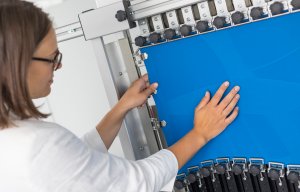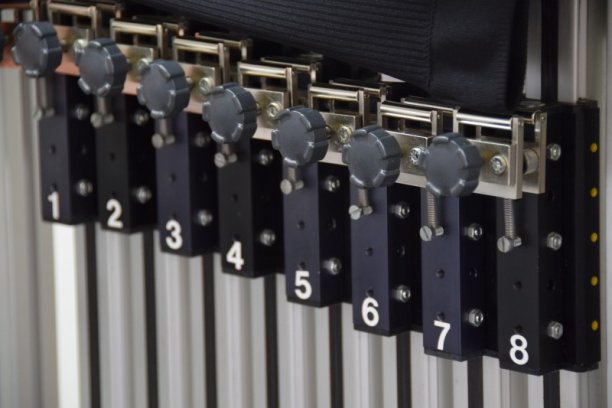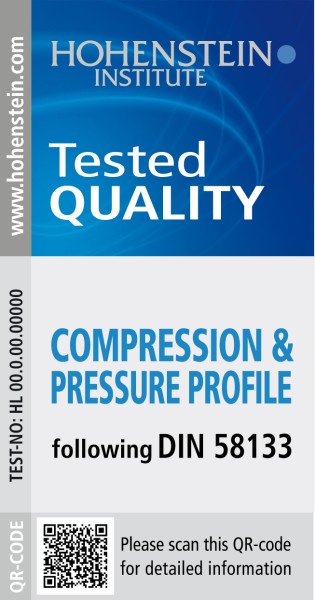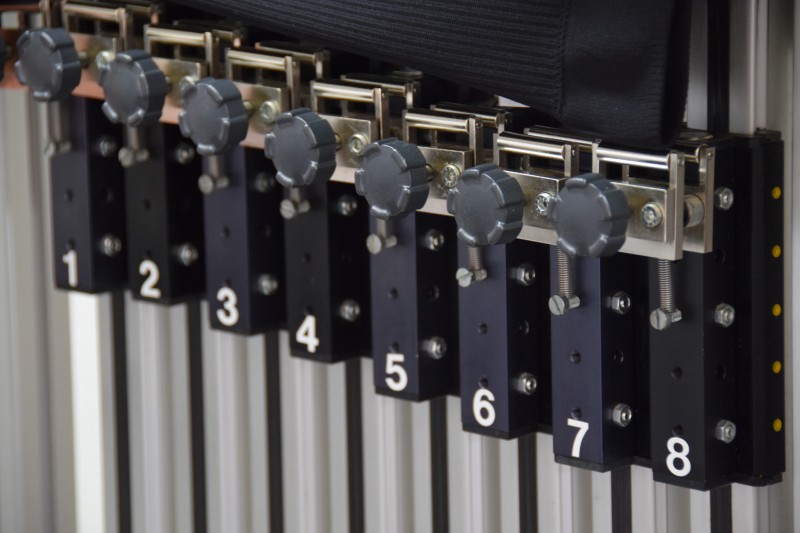
New compression standard for sports and leisure garments
According to Florian Girmond, of Hohenstein Institute, there is a lack of clarity about the actual benefits of the non-medical compression textile products.

28th November 2014
Innovation in Textiles
|
Boennigheim
 In the medical sector, compression textiles are mainly used to prevent various illnesses, or to treat them, or to improve quality of life. However, compression textiles are increasingly also being used in the non-medical sector. Compressive travel socks are supposed to help, for example, with circulatory problems. In sport, the advertising claims offer better performance, faster recovery, and other benefits.
In the medical sector, compression textiles are mainly used to prevent various illnesses, or to treat them, or to improve quality of life. However, compression textiles are increasingly also being used in the non-medical sector. Compressive travel socks are supposed to help, for example, with circulatory problems. In sport, the advertising claims offer better performance, faster recovery, and other benefits.
Whilst the medical compression hosiery has been put through tests and proved effective in its purpose, the actual effectiveness of non-medical compression textiles is disputed within the industry, the Hohenstein Institute reports.
The effectiveness of compression textiles was, therefore, discussed by the research institution with Florian Girmond, Director of the Consumer Tests Department at the Hohenstein Institute, who talked about compression testing for products in non-medical sectors and the new quality label Tested quality. Compression and pressure profile.
“In the case of non-medical compression textiles, there is a lack of clarity about the actual benefits of the products and there is no universal standard under which this kind of textile is tested to verify its functionality. If you listen to consumers, it seems as if the subjective experiences and impressions of people who are actively engaged in sport are positive,” explained Florian Girmond.
“This is also suggested by the growing sales of sports socks. However, the use of special compression hosiery for sport, especially by the general public, has not yet been common for very long. That is one reason why there are hardly any objective and soundly-based scientific studies about its effectiveness.”
 Webinar on compression testing
Webinar on compression testing “In our webinar Getting the pressure right! Compression testing, we firstly showed the participants the benefits of testing for manufacturers, retailers and users. Secondly, we used some practical examples to show them our compression testing, in which the functionality claimed by the manufacturer is tested,” said Girmond.
“As for verifying the effectiveness of non-medical compression textiles, we are pleased to say that the Hohenstein Institute is carrying out a study on this subject. We expect that this will help us to make new findings about whether it is simply blind faith that lends wings to runners or whether there is a genuine effect that may perhaps even be medically provable.”
“Compression testing is the only way of confirming the functionality of a textile. The Hohenstein Institute offers this kind of testing in compliance with the test standard DIN 58133. Where testing is successful, we give the manufacturer independent and objective confirmation of the functionality and quality of their product. Annual follow-up testing ensures that this continues to be the case,” commented Girmond.
“Manufacturers can demonstrate this by using the new Hohenstein Institute quality label, Tested quality. Compression and pressure profile. This enables them to differentiate themselves from their competitors. Consumers and retailers will also benefit. The label gives them confidence that the manufacturer's statements are not just marketing ploys but an accurate description of the functionality that is claimed. Testing in accordance with official standards also ensures consistency in the testing of compression textiles.”
“We prefer to base our testing on established standards, in this case specifically on the RAL standards RAL-GZ 387, Part 1 and 2, and DIN 58133. These standards in fact refer to medical compression hosiery. However, in relation to hosiery and bandages for legs or arms, as far as the measuring process is concerned they can be applied in exactly the same way to non-medical textiles,” explained Girmond.

“Products are tested under these standards using the HOSY test device, although other benchmarks can often also be used when assessing the results. The way the results are assessed depends on the purpose of the textile. This may affect the intensity of the pressure or the pressure profile. We test a sample against the manufacturer's data and confirm its stated functionality if our measurements match theirs.”
“In general, the testing is the same, even using HOSY [testing system]. Initially it makes no difference whether the textile is intended for medical or non-medical purposes. However, there is a significant difference in how the results are assessed.”
“With medical products, there are clearly defined requirements, but for non-medical textiles so far there are not. At least in theory, this can lead to critical situations for the manufacturer, and we discuss these. This is particularly true when the pressure lies in the same range as that of medical products.”

Business intelligence for the fibre, textiles and apparel industries: technologies, innovations, markets, investments, trade policy, sourcing, strategy...
Find out more